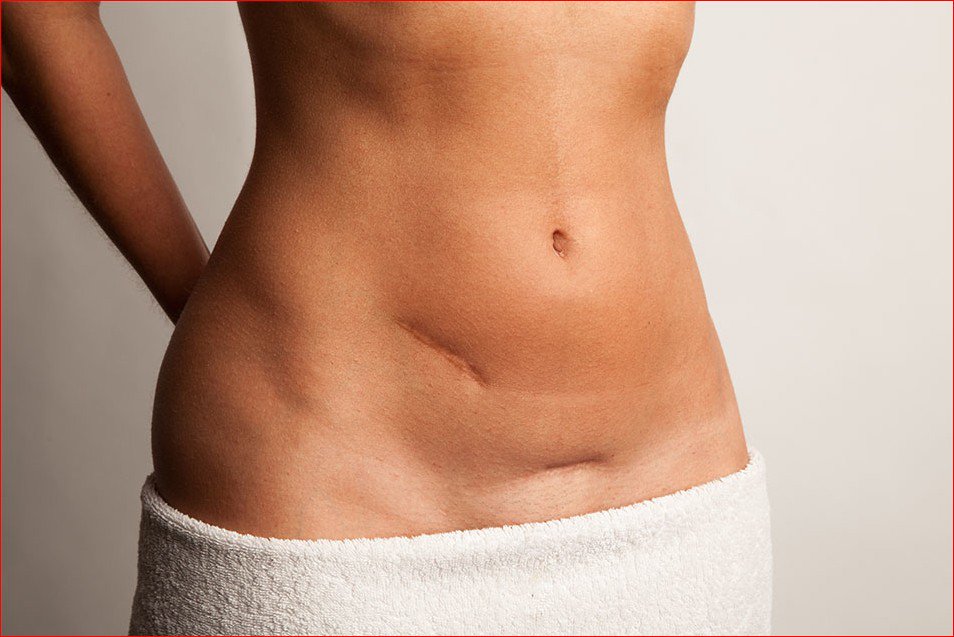Saggy buttocks, a common aesthetic concern, affects individuals of various ages and backgrounds. This condition can result from factors such as aging, significant weight loss, or sedentary lifestyles. It not only impacts one’s physical appearance but can also affect self-esteem and confidence. Fortunately, advancements in fitness and cosmetic procedures offer effective solutions for those seeking to enhance the firmness and shape of their buttocks. From targeted exercises that strengthen gluteal muscles to innovative surgical options like butt lifts, understanding the underlying causes is the first step towards achieving a more toned and lifted appearance.
Understanding the Causes of Saggy Buttocks
Skin Elasticity
Loss of skin elasticity is a key factor in developing saggy buttocks. As we age, our skin produces less collagen and elastin. These proteins keep the skin firm and flexible. Without them, skin starts to droop.
Aging naturally reduces these proteins in our bodies. This makes it harder for the skin to bounce back after being stretched. Daily activities and gravity also play roles here. Over time, this can lead to saggy buttocks.
Muscle Tone
Muscle tone directly impacts how firm or saggy our buttocks appear. Regular exercise strengthens muscles underneath the skin. Without it, muscles weaken and lose mass.
This loss of muscle mass contributes significantly to sagging appearance. It’s important to engage in exercises that target gluteal muscles specifically if you’re looking to prevent or improve saggy buttocks.
Genetics Impact
Genetics also determine your susceptibility to developing saggy buttocks. Some people are genetically predisposed to store more fat or have less muscle tone in their lower body.
This genetic component means that despite efforts through diet and exercise, some might still experience sagginess due to inherited traits from their parents.
Rapid Weight Loss Effects
Rapid weight loss can leave behind excess loose skin where fat once was filled out the space including on the buttock area which leads directly towards a saggier appearance than before losing weight too quickly without allowing time for your body’s natural adjustment processes such as gradual tightening up again afterward which generally requires both patience & consistent effort over an extended period rather than expecting instant results immediately following significant reductions within shorter timescales instead thus potentially exacerbating issues related with saggy buttocks further still unfortunately.
The Impact of Ageing, Weight, and Posture on Buttock Sagging
Ageing Effects
Ageing plays a significant role in the appearance of saggy buttocks. As we age, our bodies produce less collagen. This protein is crucial for skin elasticity and firmness. With less collagen, the skin loses its ability to snap back into place. It becomes looser and more prone to sagging.
The loss of elasticity isn’t just about looks. It affects the overall contour and appearance of the body shape. Addressing this change requires understanding how ageing impacts our skin’s structure.
Weight Fluctuations
Significant weight loss or gain can stretch the skin beyond its capacity to return to its original form. This stretching leads to a lack of firmness in areas like the buttocks. After losing a lot of weight, many people notice that their buttocks have lost their previous volume and appear saggier.
The effects are not immediate but result from repeated cycles of gaining and losing weight over time. Each cycle stretches the skin further, weakening its elastic properties.

Posture Impact
Poor posture is another factor contributing to saggy buttocks. It weakens gluteal muscles over time. Weak glutes cannot support a firm appearance effectively.
Improving posture can help strengthen these muscles again. Stronger gluteal muscles support better body shape and reduce sagging effects.
Hormonal and Age Factors in Relation to Saggy Buttocks
Menopause Effects
Menopause brings significant hormonal changes. These changes soften connective tissues, contributing to saggy buttocks. Women experience a decrease in estrogen levels during menopause. This reduction impacts skin elasticity and firmness.
The loss of estrogen leads to less collagen production. Collagen is crucial for keeping the skin tight and youthful. As collagen decreases, the skin around the buttocks loses its firmness, resulting in sagging.
Testosterone Levels
Testosterone influences muscle mass and fat distribution significantly. Both men and women produce testosterone, but levels naturally decline with age. This decline affects how fat cells are distributed across the body.
In men, lower testosterone levels can lead to decreased muscle mass under the skin of the buttocks. Reduced muscle mass makes the area appear less toned and more prone to sagging.
Women also experience shifts in fat distribution due to hormonal changes as they age. These shifts often result in an increase of fat storage around the buttocks and thighs which can contribute to a saggier appearance if not balanced with muscle tone.
Aging Impact
Aging plays a critical role in decreasing hormone production overall affecting both skin texture and elasticity over time.
As people age, their bodies produce fewer hormones essential for maintaining healthy skin structure such as collagen and elastin fibers weaken leading directly towards increased sagging particularly noticeable areas like buttock region where gravity further exacerbates problem creating droopier look compared younger years when these elements were more abundant robust supporting underlying tissues effectively preventing such drastic changes from occurring early on life span cycle thereby highlighting importance understanding how interconnected relationship between aging process itself alongside various hormonal factors ultimately shapes our physical appearance especially concerning development conditions related specifically towards having saggy buttocks
Assessing the Development and Severity Stages of Sagging Buttocks
Initial Signs
The journey towards identifying saggy buttocks begins with spotting early signs. Patients might notice a decrease in firmness. This is often coupled with slight changes in contour.
These initial indicators are subtle. They may not cause concern immediately. However, they signal changes in skin quality and underlying muscle tone.
Moderate Stage
As sagging progresses, it becomes more obvious. At this stage, visible drooping appears. There’s also an increase in skin laxity which can affect the overall look.
Patients at this stage should assess their specific needs for treatment options. It’s important to address these changes early on to manage further progression effectively.
Advanced Sagging
In advanced stages, significant droop becomes apparent. Skin folds may develop as well, marking a considerable change in appearance.
This level of sagging presents various challenges including potential risks associated with certain treatments. Understanding patient-specific needs is crucial here to select the most appropriate intervention strategy.
Non-Surgical and Surgical Treatments for Sagging Buttocks
Exercise Solutions
Exercise is a key solution for mild saggy buttocks. Squats, lunges, and deadlifts can strengthen the glute muscles. This results in a firmer appearance.
Topical treatments also help at this early stage. Creams with collagen and elastin improve skin elasticity. However, these methods offer limited improvement.
Surgical Options
For severe sagging, butt lift surgery is effective. It removes excess skin and lifts the buttocks. The result is dramatic reshaping.
Fat grafting adds volume while addressing sag. Fat from another body part is injected into the buttocks. This enhances shape and size naturally.
Surgeons may combine these surgical techniques for optimal outcomes. A personalized treatment plan ensures goals are met efficiently.
Minimally-Invasive Options for Butt Enhancement
Injectable Fillers
Injectable fillers are a popular choice. They add volume to the buttocks with minimal downtime. Many patients opt for this method because it’s quick and has immediate results.
The procedure involves injecting dermal fillers into targeted areas. This adds temporary volume and contours the buttocks. The effects last several months before needing a touch-up.
Thread Lifts
Thread lifts offer a subtle lift using biodegradable threads. They are less invasive than surgical options like liposuction or plastic surgery. Patients seeking mild improvements find thread lifts suitable.
This method uses threads that lift sagging skin on the buttocks and thighs. Over time, these threads dissolve, stimulating new collagen production in the process.
Radiofrequency Treatments
Radiofrequency treatments target saggy buttocks by firming the skin. They work by heating deep layers of skin to stimulate collagen production.
Results appear gradually as new collagen forms, leading to firmer, more youthful-looking skin. It’s a preferred option for those wary of cosmetic surgery but still desiring noticeable improvement.
Recovery Process Following Buttock Lift Surgery
Initial Period
The initial recovery period is crucial. It usually lasts between two to three weeks. During this time, patients experience limited mobility.
Patients must follow their surgeon’s advice closely. Rest is essential for healing. Avoid strenuous activities to prevent complications.
Full Activity Resumption
After six weeks post-surgery, patients can generally resume full activities. This marks a significant milestone in the recovery process.
It’s important to ease back into regular routines gradually. Listen to your body and avoid pushing too hard too soon.
Long-term Care
Maintaining weight is key for long-term results after surgery. Sudden weight changes can affect the outcome negatively.
Following the surgeon’s advice is also critical for lasting success. They provide tailored recommendations based on individual needs.
Lifestyle’s Role in Preventing Saggy Buttocks: Exercise and Diet
Strength Training
Strength training is key. It targets the glute muscles directly. This improves both shape and firmness. Regular exercise, especially targeted exercises, enhances muscle tone.
A balanced routine includes squats, lunges, and deadlifts. These exercises focus on the buttocks area specifically. They are effective for maintenance and improving body composition.
High-Protein Diet
Eating a high-protein diet supports muscle growth. It also benefits skin health significantly. Proteins are essential for collagen production, which maintains skin elasticity.
Incorporating lean meats, beans, and nuts into meals is beneficial. These foods meet the body’s needs without adding excess fat or calories.
Hydration Importance
Hydration cannot be overlooked. It plays a crucial role in keeping the skin elastic and healthy. Drinking enough water daily is vital for overall well-being too.
Water helps flush out toxins that can affect skin quality over time. This care reduces the risk of developing saggy buttocks as one ages.
Final Remarks
The exploration of saggy buttocks reveals a multifaceted issue influenced by aging, weight fluctuations, posture, hormonal changes, and lifestyle choices. Individuals face various stages of development and severity in sagging buttocks, prompting a consideration of both non-surgical and surgical interventions. Treatments range from minimally invasive options to more comprehensive procedures like buttock lift surgery, each accompanied by its own recovery process. Importantly, the role of lifestyle in preventing saggy buttocks cannot be overstated, with exercise and diet playing pivotal roles in maintaining firmness and shape.
This comprehensive analysis underscores the importance of understanding the underlying causes and available treatments for saggy buttocks. It encourages those affected to seek professional advice tailored to their specific condition and to adopt lifestyle changes that promote overall well-being. For further guidance and personalized treatment options, consulting with a healthcare professional is highly recommended.
Frequently Asked Questions
What causes saggy buttocks?
Saggy buttocks can result from aging, significant weight loss, poor posture, and hormonal changes. These factors reduce skin elasticity and muscle tone.
How do age and hormones affect buttock sagging?
With age, the skin loses collagen and elasticity. Hormonal shifts, especially during menopause or testosterone decrease in men, exacerbate these effects leading to sagginess.
Can you assess the severity of sagging buttocks?
Yes. The severity is assessed based on skin laxity, fat distribution, and muscle tone. A professional evaluation helps determine the appropriate treatment plan.
What are some treatments for sagging buttocks?
Treatments range from non-surgical options like fillers and radiofrequency therapy to surgical procedures such as a Brazilian butt lift or a traditional butt lift surgery.
Are there minimally-invasive options for enhancing the buttocks?
Yes. Minimally invasive treatments include injectable fillers and thread lifts that offer subtle enhancements without extensive downtime.
What does recovery from buttock lift surgery entail?
Recovery involves rest with limited sitting or lying directly on your backside for about two weeks; full recovery may take several weeks with gradual resumption of activities.
How can lifestyle prevent saggy buttocks?
Regular exercise targeting gluteal muscles combined with a balanced diet rich in proteins and vitamins supports skin health and muscle tone to combat sagginess.








